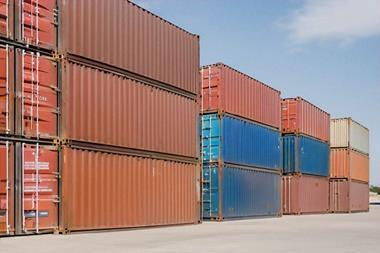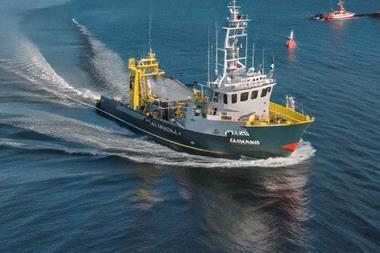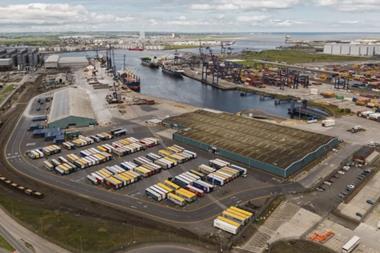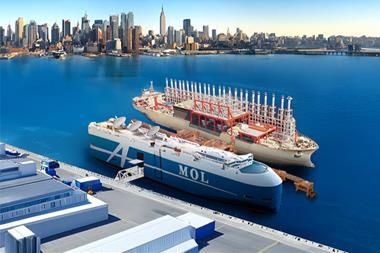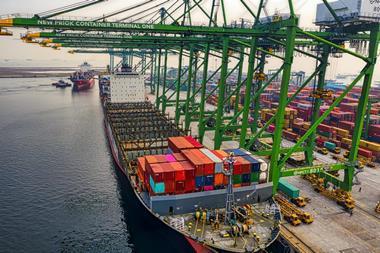All eyes in the maritime industry are now on what the developing conflict between Israel, Iran and now the US could mean for shipping – especially if Tehran opts to close the Strait of Hormuz, a major shipping lane.
Last week – before the US military strikes over the weekend – the impact of the conflict in the Middle East had been “limited”, according to Michael Field, chief equity strategist at Morningstar. The Shanghai Freight Index, for instance, a proxy for freight rates, had not “seen a bounce on the back of the conflict”, he said.
Early last week, Omar Nokta, head of maritime shipping noted that “rate figures in general are relatively subdued and have [just] bounced off of a recent low point”. But by mid-week he reported that spot averages for very large crude carriers – among the largest ships in the world – had reached nearly $47,000 (€40,800) per day worldwide, up from $28,000 the previous week.
Likewise, Andy Dacy, global head of transportation at JP Morgan Asset Management, noted that “war risk premiums associated with vessel insurance have gone up for vessels transiting the area”. He said: “Some shipowners are choosing not to send their vessels into the Persian Gulf. The resulting shortage in capacity has pushed up shipping rates.”
The Red Sea and Suez Canal – two other major “global choke points for maritime transport”, according to Sarah Schiffling, assistant professor in supply chain management at Hanken School of Economics, have already seen severe disruption due to the attacks by the Houthi from Yemen. This has forced many ships to go the long way around Africa on routes between Asia and Europe, which “adds one to two weeks of travel time and around $1m in cost per journey”, according to Schiffling. “Longer travel times also mean that global capacity is reduced, as ships are tied up on a journey for longer and that all has ripple effects across global transport networks and supply chains.”
Schiffling also noted that the effects are not limited to sea freight. “There is extensive rerouting in air transport as well… air freight capacity decreases at the same time as maritime capacity, which could drive up prices further.”
But most of the impact of the Red Sea disruption on international trade and ports has played out. “Many shipping lines and ports have adjusted to this re-routing, and industry is only considering returning to this route in or around the fourth quarter,” said Jacqueline Broers, co-portfolio manager at Utilico Emerging Markets.
The Strait of Hormuz, however, is particularly important for the trade in oil and liquefied natural gas – not just from Iran, but also from Qatar and UAE. “Any disruption to shipping there would, of course, affect energy and transport, but also many other products such as paints or tyres that contain crude oil or its derivatives,” Schiffling said.
Iran has previously threatened to block the strait in response to sanctions, and at the weekend it was reported that the country’s parliament had approved such action. “This would be a very significant move with huge repercussions for global trade,” according to Schiffling.
It is also easier said than done. In a note to clients, Vikas Dwivedi, global oil and gas strategist at Macquarie, explained that it was “a tough area to block with vessels or mines”, and highlighted other potential issues. “Blockage could alienate regional producers,” he said, “including those that have been normalising relations with Iran”. It would also “limit Iranian imports of key consumer goods” and over the long term “encourage other dormant logistical systems to be brought back into service,” Dwivedi added.
But the risks are significant to oil prices are significant. “Should Iran successfully block the Strait of Hormuz for any period of time, the impact on oil prices could be unbounded,” he said. “Using the full 15m barrels-per-day of supply at risk, the upside (as a function of duration) would be $240 per barrel. [This] highlights how small and even minute probabilities of a blockage can introduce extremely large risk premiums.”
Good news for owners of energy assets? Dacy said: “A re-routing to other sources of energy supply will further extend trade distances, slowing the velocity of supply and likely increasing energy commodity prices.”
But Matt Gertken, chief geopolitical strategist at BCA Research, fears that a closure of the strait would “occasion a global recession, temporarily impeding the global energy supply chain”. In the long term, he said, “eventual political succession or regime change in Iran would also likely open up Iranian energy reserves”, which would not “be positive for the energy sector’s anticipated sales and pricing power”.
For the future, the bigger question is of safe sea trade – and the interplay between the US, which has historically provided security to sea trade, and China, which has increasing dependence on trade in commodities. Dacy said: “The question remains, will both provide seagoing security or will one eclipse the other?”
To read the latest IPE Real Assets magazine click here.





